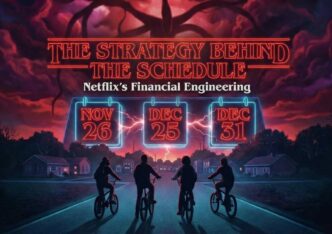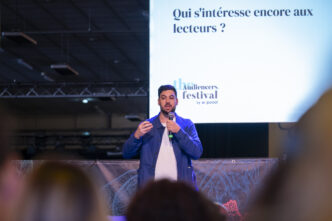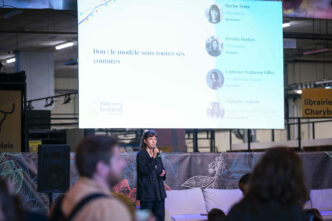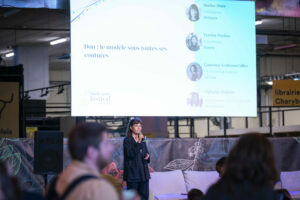

After noticing Gina Bulla, executive director of audience research at The Atlantic, sign up to The Audiencers’ newsletter, I just had to get in touch to hear more about her role. What exactly is audience research? What type of research does her team run? And how are the findings used to increase engagement, conversion and retention at The Atlantic?
Gina, could you start by telling us about your experience and how you came to take on this role?

The Atlantic’s Audience Research team launched in 2019, as we and so many others in the industry began forming new relationships with readers via digital subscriptions. At the time, I was working on the advertising insights side of the business, focused on helping brands understand what made The Atlantic’s audience unique.
I was excited to learn more about our audience on a deeper level beyond what we could know about them from data and demographics. I saw an opportunity for those insights to strengthen our work across the organization. Fast forward a few years, and I pivoted to lead our Audience Research team.
It’s a new role for me, but what made the leap easier is Audience Research is an emerging discipline in the publishing industry. So there’s an opportunity to determine what Audience Research means for The Atlantic along with the industry. And, The Audiencers helps connect me with others in similar roles—so thank you for that!
What is audience research at The Atlantic?
I always say that my job is listening to people. We can glean so much data from our metrics, and our Data Science team are expert at analyzing and making sense of it. But there are also so many questions that data can’t answer. That’s where Audience Research comes in, to try to answer the questions that data can’t answer: why is something happening, how do people feel, and what are their unmet needs and desires?
It’s important to me that when we think about Audience Research, it’s not just our current audience that we want to connect with but our prospective audience as well. Of course, our super fans are an incredibly important voice, but to truly understand who our audience can be, we also need to connect with groups that are less (or not yet) engaged with us.
And probably the most important role of an audience researcher is to advocate for our readers and ensure their voices are heard when building new experiences.
What are The Atlantic’s research methods?
We are primarily focused on qualitative research, so activities that allow us to solicit feedback verbatim from current and prospective readers, like interviews, forums, and surveys. We’ve been experimenting with diary studies–longitudinal research, where we can connect with participants over a period of time to understand their habits better.
Because it takes effort for respondents to participate, we’re selective about the volume of these activities. Speaking to our readers and subscribers face-to-face is a privilege, so we want to respect their time, privacy, and opinions.
We are also tuned in (or listening) to our readers in what I’ll call non-active ways. What is our customer care team hearing? What are people saying on social media? What is resonating across the industry?
How do you decide what to research?
We try to balance the big, important questions that can help us define the future of The Atlantic with the more specific questions that can help ensure a product’s or project’s success.
One of the big, important questions we’re focused on right now is: who are our future subscribers? We’ve just executed research to help us identify audiences that may be inclined to subscribe to The Atlantic in the near or not-so-distant future. We’ll use this research to ideate strategies to increase conversion, engagement, and discovery.
How are projects prioritized?
That’s probably one of the biggest challenges. Every department in the organization wants insight from our audience, but as I alluded to before, we don’t want to oversaturate them with research requests.
We ask two questions to filter the projects that we take on:
- Is it actionable, or will we make a decision based on the research?
- Is it really a question that our audience can answer for us?
Your work obviously relates back to a wide variety of teams at The Atlantic – including product, marketing, editorial and data. How do you make sure that each team is able to learn and act from your insights?
Synthesis and sharing out results is one of, if not the most important, steps in our process. For almost every project, we create a report and try to make it as engaging as possible (visuals, videos, etc.). Then we share it in a few ways: via group slacks, and research readout meetings that stakeholders across the company attend, emails, etc.
That way, Audience Research isn’t happening in a vacuum, and what we’re learning can inform any team’s work.
Can you give us an example of how something you learned from audience research was used to increase engagement, conversion, and retention at The Atlantic.
Something we hear a lot from readers as a barrier to subscribing, or sometimes a reason for canceling is that they don’t have as much time to devote to our journalism as they might like. So it’s encouraged us to think about how we can help our audience fit The Atlantic into their lives more seamlessly. I don’t want to say too much because we’re working on some new features right now but keep an eye out for some of those enhancements soon.
I’d like to say thank you to Gina for her time – I certainly learnt a lot and am now an advocate for every publisher employing someone in this kind of role! As she mentioned to me in the interview, Audience Research is a practice that’s fairly new in the industry, but something that’s becoming increasingly valued as publishers are becoming consumer businesses, requiring them to put readers first, understanding exactly what brings them to engage, convert and remain loyal to the brand.












